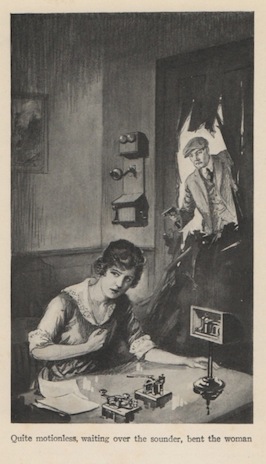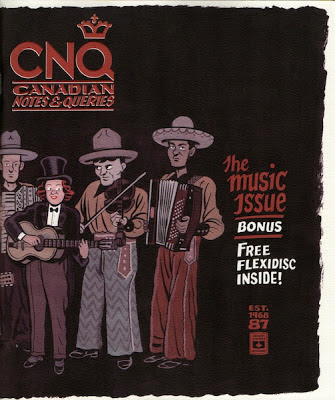The new
Canadian Notes & Queries has landed, bringing with it another Dusty Bookcase column. The eighth to date, it's a review of
Tan Ming, a fantastic, post-apocalyptic, pseudonymously self-published novel by electric organ pioneer Morse Robb.
So dull.
Oh, but doesn't
Tan Ming look good? How about that cover!
It sounded good, too. In
Nuclear Holocausts: Atomic War in Fiction 1895-1984, Washington State University professor Paul Brians begins his description thusly: "An amusing fantasy in which a department store window dresser falls in love with a robot mannequin and manages to conjure into its body the soul of a princess named Tan Ming from a postholocaust future." The ever-reliable Wikipedia once claimed that the novel inspired
Mannequin, the romantic comedy starring Kim Cattrell and Andrew McCarthy.
You'll remember
Mannequin for "Nothing's Going to Stop Us Now", which topped the American charts back in 1987. The new
CNQ comes with music – much better music – in the form of a flexidisc by
Al Tuck.
When was the last time you bought a magazine with a flexidisc?
The last I picked up was the April 1981 issue of
Smash Hits. It came with a live recording of "Pretending to See the Future" by Orchestral Maneoeuvres in the Dark and "Swing Shift" by our own Nash the Slash.
Not to slight Hazel O'Connor – or Messrs Lydon, Levine, Wobble and Weller – but don't you prefer this?
The cover, as always, is by Seth. Inside you'll find Mike Barnes, Michel Basilières, Devon Code, Michael Deforge, Emily Donaldson, Jennifer A. Franssen, Lorna Jackson, Mark Anthony Jarman, Evan Jones, Adrian Michael Kelly, Mark Kingwell, Lewis MacLeod, Marion MacLeod, David Mason, Ross McKie, Robert Melançon, Shame Nielson, Patricia Robertson, Ray Robertson, Sean Rogers, Mark Sampson, Michael Schmidt, Norm Sibum, Dan Wells, Paul Wells, Bruce Whiteman and Robert Wiersema.
At $20 per annum, subscriptions are a great deal. You can get one
here.











































